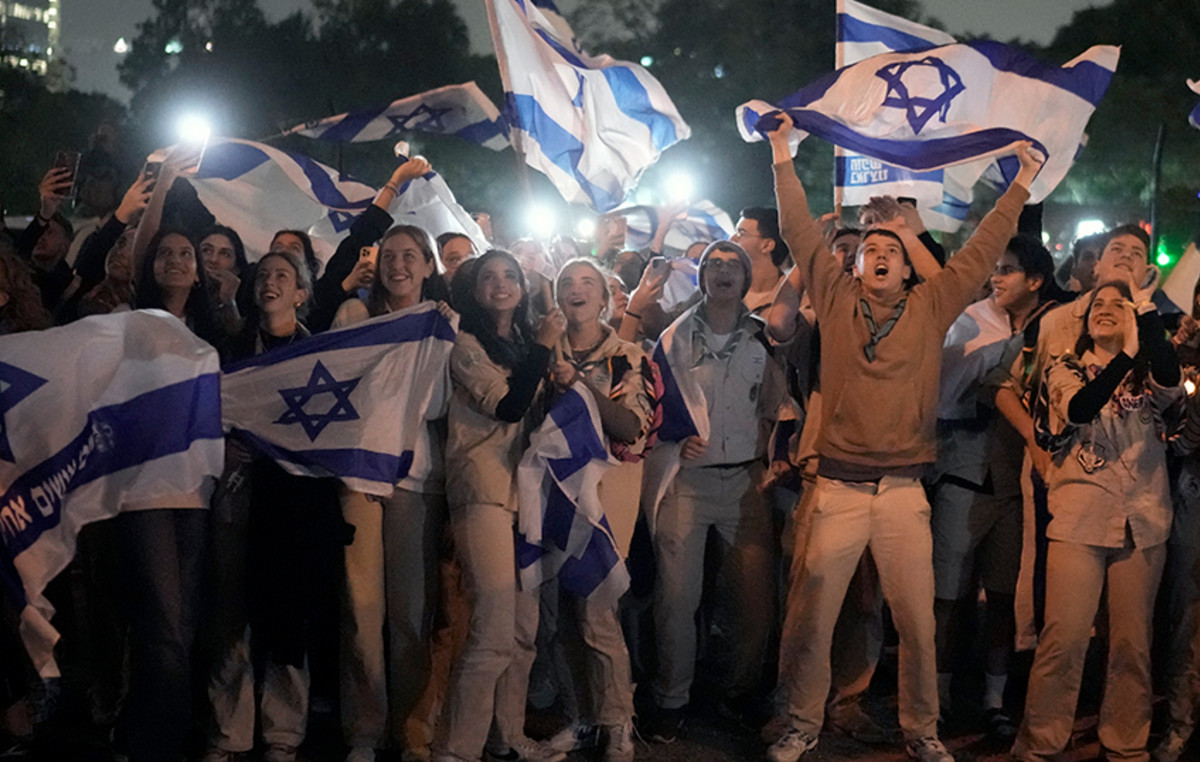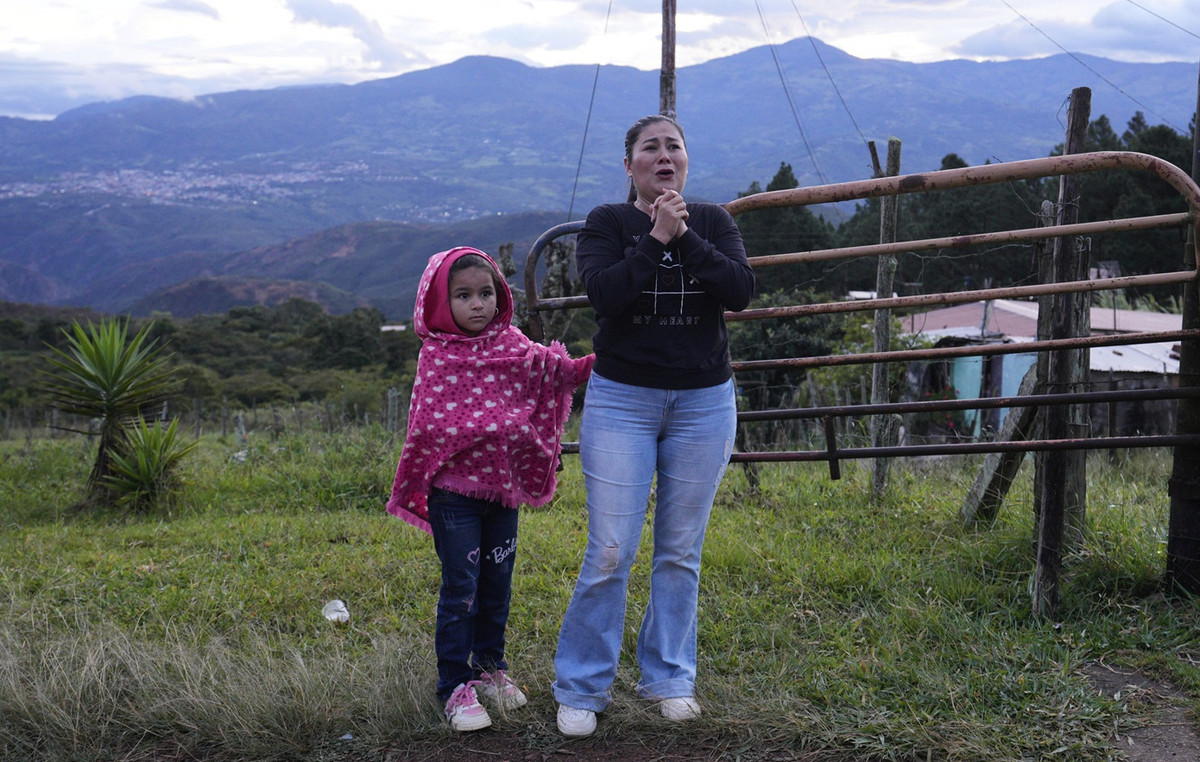Twelve samba schools will cross the Marquês de Sapucaí in the fight for the title of champion of the Rio de Janeiro Special Group on the 11th and 12th of February.
The Imperatriz Leopoldinense, champion of Carnival 2023 with the plot “O perreio do goat that the Excommunicado treated with ill will and the Santíssimo gave no shelter”, will defend the title won and will go in search of her tenth victory in the Rio revelry.
To win, the school in the Ramos neighborhood, in the north of Rio de Janeiro, told a fictional story of the cangaceiro Lampião’s search for a place in heaven and hell.
But which plots will be taken to Sapucaí in 2024? A CNN did a survey and presents you with the complete list below:
Empress Leopoldinense
Developed by carnival artist Leandro Vieira, the Imperatriz’s plot for 2024 is “With luck turning to the moon according to the testament of the gypsy Esmeralda”, based on the leaflet “The testament of the gypsy Esmeralda”, by cordelist Leandro Gomes de Barros.
The story is fictional and tells the story of a gypsy to decipher the world of dreams, palm reading, the influence of the stars in everyday life, lucky numbers, dates for which good and bad things happen and other types of luck prediction .
Unidos do Viradouro
Runner-up in 2023, Unidos do Viradouro will have the plot “Arroboboi, Dangbé”, which seeks to explore and show how the cult of snake voodoo left the western coast of Africa and arrived in Brazil.
Developed by carnival artist Tarcisio Zanon, the Niterói school will tell the story of Vodun priestesses, women chosen and initiated into rites of praise to the sacred serpent, whose mystical trajectories are intertwined in epic combats, tactical camouflage and vital resilience.
United States of Vila Isabel
Third place in 2023, Unidos de Vila Isabel, chose to take its plot and samba from 1993 to the avenue again. “Gbalá — Viagem ao Templo da Criação” was originally developed by carnival artist Oswaldo Jardim and, this time, it will be in the hands of super champion Paulo Barros.
The plot starts from a fictional story based on Yoruba culture to show the harm that men do to the world and defend that children and their purity are the salvation of the planet. The samba is written by Martinho da Vila.
Nilópolis Hummingbird
Under the baton of carnival artist João Vitor Araújo, Beija-Flor de Nilópolis will tell the story of Rás Gonguila, a shoeshine boy and doorman who lived in Maceió at the beginning of the 20th century. Passionate about Carnival, he founded Cavaleiro de Montes, one of the main groups in the capital of Alagoas at the time.
Gonguila proclaims himself a member of the Ethiopian monarchy, becomes the Ethiopian Prince of Alagoas and becomes an influential person in the city of Maceió. He was a true city councilor and was consulted by influential politicians and intellectuals in the capital of Alagoas.
Mangueira First Station
With the plot “The Black Voice of Tomorrow”, Mangueira will pay homage to one of its most notable fans: Alcione. The multi-time champion of the Rio carnival will tell the story of the singer from Maranhão, starting from her childhood and musical initiation in São Luís to reach her connection with the green and pink school.
In the tribute, Mangueira will talk about Alcione’s contribution to her children’s school, Mangueira do Ajante, of which she is the founder and honorary president.
Grande Rio Academics
Grande Rio will take to Sapucaí the plot “Our destiny is to be a jaguar”, by carnival artists Gabriel Haddad and Leonardo Bora. The idea for the Duque de Caxias school comes from the book “Meu destiny é ser jaguar”, by Alberto Mussa, which shows the Tupinambá myth of the creation of the world.
The Tupinambá people have the jaguar as their greatest symbol, representing recreation in the world. Grande Rio promises to explore the jaguar’s link with different manifestations of Brazilian culture and express the strength of Brazil’s original peoples.
Salgueiro Academics
Salgueiro, a traditional school in the north of Rio, will have the theme “Hutukara”, which will talk about the Yanomami people.
The school in the Andaraí neighborhood will tell the story of the people who occupy the largest Indigenous Land in Brazil in a manifesto that will defend the indigenous peoples of Brazil and defend the preservation of the Amazon. Salgueiro is counting, once again, on carnival player Edson Pereira to seek the title that hasn’t been won since 2009.
Tuiuti Paradise
Paraíso do Tuiuti, which won 8th place in 2023, will have as its plot “Glória ao Almirante Negro”, by carnival artist Jack Vasconcelos. The school in the São Cristóvão neighborhood will use comic book language to tell the story of João Cândido, a soldier from the Brazilian Navy who led the Revolt of the Whip in 1910.
João Cândido led his colleagues in the Navy in a revolt that called for an end to physical punishments for military personnel, which had already been abolished at the beginning of the Republic, but continued to be applied.
“We, sailors, Brazilian citizens and republicans, can no longer support slavery in the Brazilian Navy”, declared the rebels at the time.
Unidos da Tijuca
The four-time champion of the Rio carnival Unidos da Tijuca will have multi-champion carnival artist Alexandre Louzada to tell the story “O Conto de Fados”. The idea of the school is to bring the mysticism and legends surrounding the history of Portugal to the avenue, as well as showing the Portuguese cultural influence on Brazil.
Tijuca, which has a strong connection with Portugal, has had Vasco da Gama, a club founded by Portuguese immigrants and their descendants, in 1998, and the Portuguese language, in 2002, as its storyline.
Portela
The duo Antônio Gonzaga and André Rodrigues will have the challenge of taking the plot “Um defeito de cor” to the avenue by the biggest champion of Rio Carnival, Portela. The narrative is based on the book of the same name by writer Ana Maria Gonçalves, which tells the story of the character Kehinde, who is also Luísa Mahin.
The fiction shows the trajectory of this black heroine and shows passages from Afro-Brazilian history to tell of Luísa’s connection with her son, the black abolitionist lawyer Luiz Gama.
“Portela’s plot is a great tribute to all these women who made the history of black freedom in Brazil”, says Gonzaga.
Independent Youth of Father Miguel
Mocidade will count on Marcus Ferreira to take the plot “Ask for cashew and I’ll give it… Cashew tree that gives it!” to the avenue. The proposal of the association from the west of Rio is to unveil the Brazilianness behind this fruit that was one of the first treasures taken by colonizers when they arrived in Brazil.
The choice is an attempt by the school to regain its tropicalist identity, so present in its parades in the 1980s and 1990s. Mocidade will take history, legends, curiosities and even puns about cashew to Sapucaí in 2024.
Unidos do Porto da Pedra
Unidos do Porto da Pedra will return to the Special Group after 11 years, presenting a parade about the “Perpetual Lunar: The Prophetic of Popular Knowledge”.
The plot will be based on the book “Lunário Perpétuo, written in the 14th century, in Spain, by Jerónimo Cortés. The book travels around the world, reaches Brazil and, according to Câmara Cascudo, becomes the most read in the Northeast for 200 years.
“Lunário educated, Lunário taught literacy, Lunário guided northeasterners for 200 years”, says carnival worker Mauro Quintaes.
The book is a small encyclopedia that tells a little about everything: from temperature to how to plant and use herbs.
Parade order
Sunday (11/02)
- Unidos do Porto da Pedra
- Nilópolis Hummingbird
- Salgueiro Academics
- Grande Rio Academics
- Unidos da Tijuca
- Empress Leopoldinense
Monday (12/02)
- Independent Youth of Father Miguel
- Portela
- United States of Vila Isabel
- Mangueira First Station
- Tuiuti Paradise
- Unidos do Viradouro
Ticket prices
Tickets for the stands and individual seats are now on sale and can be purchased through from this website.

Sunday and Monday
- Sector 2: R$145 (half price) and R$290 (full price)
- Sector 3: R$145 (half price) and R$290 (full price)
- Sector 4: R$145 (half price) and R$290 (full price)
- Sector 5: R$145 (half price) and R$290 (full price)
- Sector 6: R$175 (half price) and R$350 (full price)
- Sector 7: R$150 (half price) and R$300 (full price)
- Sector 8: R$150 (half price) and R$300 (full price)
- Sector 10: R$145 (half price) and R$290 (full price)
- Sector 11: R$145 (half price) and R$290 (full price)
- Sector 12 — Individual Chair: R$ 145 (half price) and R$ 290 (full price)
Champions Saturday
- Sector 2: R$105 (half price) and R$210 (full price)
- Sector 3: R$105 (half price) and R$210 (full price)
- Sector 4: R$105 (half price) and R$210 (full price)
- Sector 5: R$105 (half price) and R$210 (full price)
- Sector 6: R$120 (half price) and R$240 (full price)
- Sector 7: R$100 (half price) and R$200 (full price)
- Sector 8: R$120 (half price) and R$240 (full price)
- Sector 10: R$105 (half price) and R$210 (full price)
- Sector 11: R$105 (half price) and R$210 (full price)
- Sector 12 — Individual Chair: R$95 (half price) and R$190 (full price)
Source: CNN Brasil
I’m Robert Neff, a professional writer and editor. I specialize in the entertainment section, providing up-to-date coverage on the latest developments in film, television and music. My work has been featured on World Stock Market and other prominent publications.







